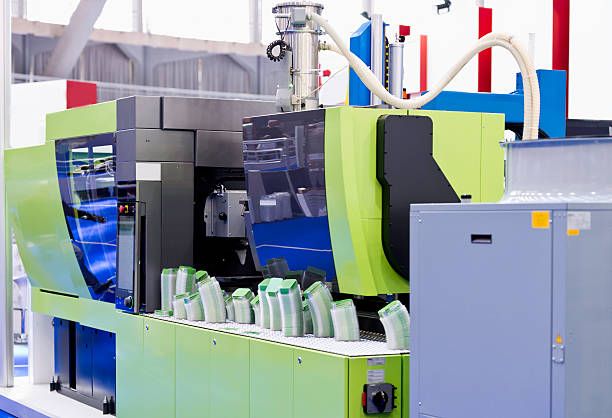Unlock your product's potential with our One-stop solutions!
+86-755-83222882

GET QUOTE
What are the Applications of Overmolding?
In the ever-evolving landscape of manufacturing, innovative techniques continually reshape how products are designed, produced, and optimized. One such groundbreaking technique is overmolding. This versatile process has become essential across various industries, offering unparalleled benefits in creating durable, functional, and aesthetically pleasing products. In this comprehensive guide, we'll delve into the intricacies of the overmolding process, explore its numerous applications, and answer the key question: "What are the applications of overmolding?"
Understanding the Overmolding Process
Overmolding is a sophisticated manufacturing technique that combines two or more materials to create a single finished product. Typically, this involves injection molding a softer, flexible material (often a thermoplastic elastomer) over a rigid substrate, usually made of plastic or metal. This process enhances not only the product's functionality but also its durability and user experience.
How Does Overmolding Work?
The overmolding process begins with the creation of the substrate, which is produced through traditional injection molding. Once the substrate is formed, it is placed into an overmolding tool where the second material is injected over it. This second material bonds with the substrate, creating a cohesive unit. The precision and compatibility of the materials are crucial to ensure a strong bond and optimal performance of the final product.
Key Advantages of Overmolding
Overmolding offers several advantages that make it a preferred choice in various applications:
- Enhanced Grip and Comfort: By adding a soft layer to hard materials, overmolding improves the tactile feel and grip of products, enhancing user comfort.
- Increased Durability: The additional layer provides extra protection against impacts, wear, and environmental factors.
- Design Flexibility: Overmolding allows for complex designs and the integration of multiple functionalities within a single product.
- Cost Efficiency: Combining materials in a single process can reduce manufacturing steps and assembly costs.
What are the Applications of Overmolding?
The applications of overmolding are vast, spanning numerous industries from consumer electronics to medical devices. Here, we'll explore some of the most prominent sectors where overmolding plays a crucial role.
Consumer Electronics
In the realm of consumer electronics, the overmolding process is indispensable. It is used to create ergonomic and durable housings for devices such as smartphones, tablets, and remote controls. The soft outer layer not only enhances the user's grip but also provides impact resistance, protecting delicate internal components.
Medical Devices
Overmolding is pivotal in the medical field, where precision and reliability are paramount. It is used to manufacture various medical devices and instruments, including surgical tools, handles, and tubing. The process ensures that these devices are not only durable but also comfortable to use, reducing the risk of slippage during critical procedures.
Automotive Industry
In the automotive industry, overmolding is employed to produce components that require a combination of strength and flexibility. This includes parts like gaskets, seals, and various interior elements. The overmolding process enhances these components' durability, ensuring they can withstand the rigors of automotive use while providing a comfortable interface for drivers and passengers.
Power Tools
Power tools are another area where overmolding applications are prevalent. The process is used to create grips and handles that are both sturdy and comfortable, improving user control and reducing fatigue during prolonged use. Additionally, overmolding can help insulate the tools, protecting users from electrical hazards.
Industrial Equipment
For industrial equipment, overmolding is often used to manufacture components that require robust performance under challenging conditions. This includes handles, grips, and protective housings for machinery and tools. The enhanced durability and ergonomic benefits provided by overmolding ensure that industrial equipment can perform reliably in demanding environments.
Specialized Applications of Overmolding
Beyond the more common uses, overmolding finds applications in several specialized areas, demonstrating its versatility and adaptability.
Customizable Consumer Products
Overmolding allows manufacturers to produce highly customized consumer products. From personalized kitchen utensils to bespoke athletic gear, the ability to combine different materials and colors enables the creation of unique, user-specific items. This customization is not only a selling point but also adds significant value to the consumer experience.
Wearables and Smart Devices
The rise of wearables and smart devices has further expanded the applications of overmolding. These devices, which often require a combination of flexibility, durability, and aesthetics, benefit greatly from the overmolding process. Examples include fitness trackers, smartwatches, and even smart clothing, where overmolding ensures that electronic components are securely encased while maintaining user comfort.
Military and Tactical Gear
In the military and tactical sectors, overmolding is used to produce gear that must withstand extreme conditions. This includes items such as weapon grips, protective casings for electronics, and various equipment handles. The overmolding process ensures that these products are not only tough and reliable but also provide the necessary ergonomic benefits for effective use in the field.
Sports and Recreational Equipment
Overmolding is also utilized in the production of sports and recreational equipment. This includes everything from bicycle handles and fishing gear to protective padding and equipment grips. The process enhances the durability and functionality of these items, making them more enjoyable and safer for users.
The Future of Overmolding
As technology continues to advance, the applications of overmolding are expected to grow even further. Innovations in material science and manufacturing techniques will likely expand the possibilities for overmolding, allowing for the creation of even more sophisticated and high-performance products.
Emerging Trends
- Sustainable Materials: There is a growing focus on using environmentally friendly materials in overmolding, driven by increasing awareness of sustainability issues. This includes the development of biodegradable or recyclable polymers that can be used in the overmolding process.
- Smart Materials: The integration of smart materials that can change properties in response to external stimuli (such as temperature or pressure) is an exciting trend. These materials can further enhance the functionality of overmolded products.
- Advanced Manufacturing Techniques: Techniques such as 3D printing are being combined with overmolding to create complex and highly customized products. This hybrid approach offers unprecedented design flexibility and the potential for rapid prototyping and production.
Challenges and Opportunities
While the overmolding process offers many benefits, it also presents certain challenges. Ensuring a strong bond between different materials, managing the complexity of multi-material designs, and maintaining cost-effectiveness are all critical considerations. However, with continued innovation and investment in research and development, these challenges can be effectively addressed, paving the way for new opportunities in various industries.
Conclusion
The overmolding process is a transformative manufacturing technique with a wide range of applications across numerous industries. From enhancing the grip and durability of consumer electronics to ensuring the reliability of medical devices and automotive components, overmolding offers significant benefits. As technology continues to evolve, the potential applications of overmolding will expand even further, driving innovation and improving product performance and user experience.
In answering the question, "What are the applications of overmolding?" we have seen that the possibilities are vast and varied. Whether in everyday consumer products, specialized medical equipment, or rugged industrial tools, overmolding stands out as a versatile and valuable process. As manufacturers continue to explore and implement this technique, we can expect to see even more innovative and high-quality products emerging in the market.
If you are looking to leverage the power of overmolding for your next project, SZOMK is the ideal partner for you. With years of expertise in plastic injection molding and a commitment to quality and innovation, SZOMK offers professional injection molding services tailored to your specific needs. Our state-of-the-art facilities and skilled team ensure precision and excellence in every product we deliver. Choose SZOMK for your overmolding projects and experience the difference that expertise and dedication can make. Contact us today to learn more about how we can help bring your vision to life.


